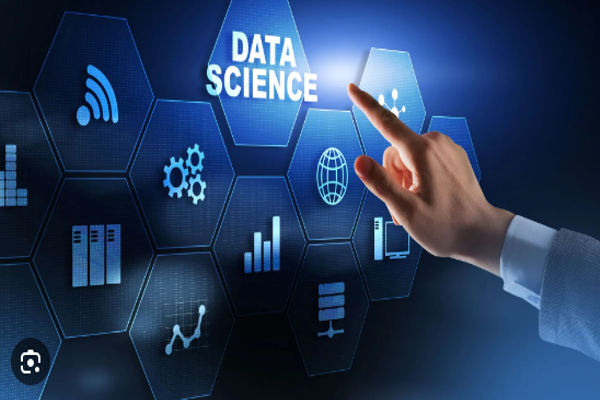Distinction Between Data Science, AI, and Machine Learning: Revealed

Modern businesses are aware of the usefulness of integrating Artificial Intelligence (AI), data science, and Machine Learning (ML). However, these concepts often need clarification, so deciding which technology will help and why can be challenging.
In this brief guide, we will reveal the details and characteristics of each technology and tell you more about its relationship and application.
Artificial Intelligence: What Is This Technology?
Artificial Intelligence (AI) is a digital technology designed to imitate human intellect, qualifying devices to make decisions and learn like people. The prior purpose of AI usage in modern companies is to create algorithms and software systems to complete tasks that would typically demand human intervention independently. AI is excellent at analyzing data, pattern recognition, solving complex challenges, and accommodating dynamic conditions.
AI is categorized into two main types:
- Narrow AI. A program specializing in addressing specific issues, including speech recognition, picture analysis, or recommender systems. It operates in particular contexts and isn’t able to go beyond its programmed functions.
- General AI. This system almost completely copies human intelligence, allowing it to perform various tasks. It can handle all narrow AI’s duties and has self-learning skills, allowing it to enhance performance constantly.
Artificial Intelligence is present in many areas of daily life. For example, most smartphones are equipped with AI assistants. AI algorithms are also used in healthcare, logistics, finance, education, and entertainment. Among the technologies powered by artificial intelligence are robotic systems, autopilot cars, content editors, etc.
Machine Learning: Revolutionary AI Branch
Machine Learning (ML) is a subbranch of AI that represents self-learning gadgets and software systems that don’t require constant manual updates to identify new patterns and change current workflow accordingly. ML allows machines to independently detect patterns, determine trends, make accurate forecasts, and produce conclusions based on previously acquired information.
Machine learning technology is divided into several subtypes:
- Supervised learning implies training models employing labeled sets of data to unveil routines and make accurate predictions based on existing observations.
- Unsupervised learning entails training systems with unlabeled information to uncover unseeable patterns and gather matching data points, gaining more useful insights.
- Reinforcement learning takes a different approach, where systems study through trial and error to maximize benefits by interacting with their environment, adapting and enhancing their decision-making processes over time.
Machine learning technology constitutes the most compact subset of Artificial Intelligence, so any industry using AI or data science can augment the current system’s capabilities. The introduction of ML helps devices continually improve, enhancing prediction, fraud prevention, personalized recommendations, etc. By learning from constantly updated data, systems can act more efficiently and adjust to present conditions, achieving the highest possible efficiency.
What is Data Science?
Data science is a tool established on rigorous analytical techniques whose key application implies the derivation of concise analytical conclusions from large amounts of information. This technology involves selection, preparation, structuring, and analysis, which are mandatory procedures. Data science allows you to extract short analytics from huge data sets and use the information to your advantage.
Here are several examples of data usage in various business domains:
- Finance: Preventing fraud, forecasting economic trends, and improving investment strategies.
- Healthcare: Developing personalized treatment plans, predicting epidemics, and comparing clinical trial results.
- Marketing: Studying consumer behavior, optimizing advertising campaigns, and enhancing customer segmentation.
- Manufacturing: Predicting equipment failures, optimizing manufacturing processes, and enriching quality control.
- Media: Analyzing user interests and tailoring recommendations based on preferences.
These examples are just a few ways data science transforms familiar tasks with valuable insights and analyzes massive amounts of data. This technology can handle any task that involves deep analysis of large amounts of data. So, if you are wondering how to make an app like Spotify or Netflix that will provide personal recommendations, the answer is to implement AI, ML, and Data Science.
Brief Comparison of Data Science, AI, and ML
All of the technologies we have listed have a common characteristic: they are all data-driven. Moreover, they are more connected than they seem: artificial intelligence includes data science, which in turn includes machine learning.
The key differences between the three concepts are in their intended purpose. So, the goal of artificial intelligence is to create smart digital systems and devices. Data science aims to process and analyze large amounts of information to help AI systems accomplish a given task. Machine learning is designed to train both of these systems, improving their performance and ensuring reliability and safety.
Thus, all three technologies are important drivers of digital progress for modern businesses, making them indispensable enablers for a multitude of industries.
Wrapping Up
AI is all about making smart devices, while machine learning is a special part of AI that teaches them how to study. On the other hand, data science is about getting valuable insights from data, which is important for both AI and machine learning. All of these fields have the potential to change industries and have a big impact on our everyday lives and careers.




